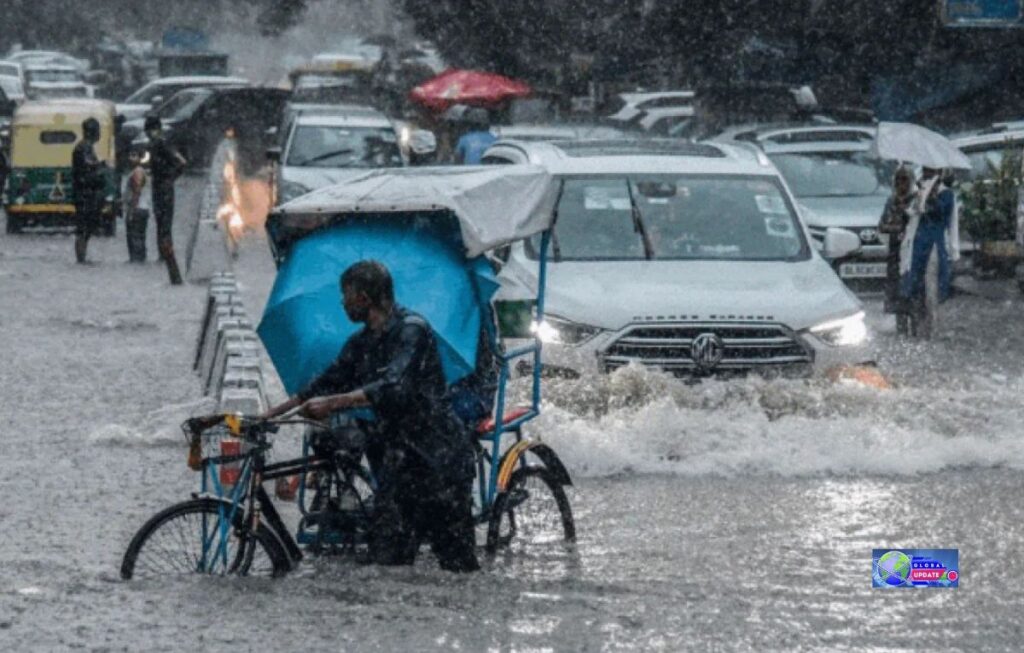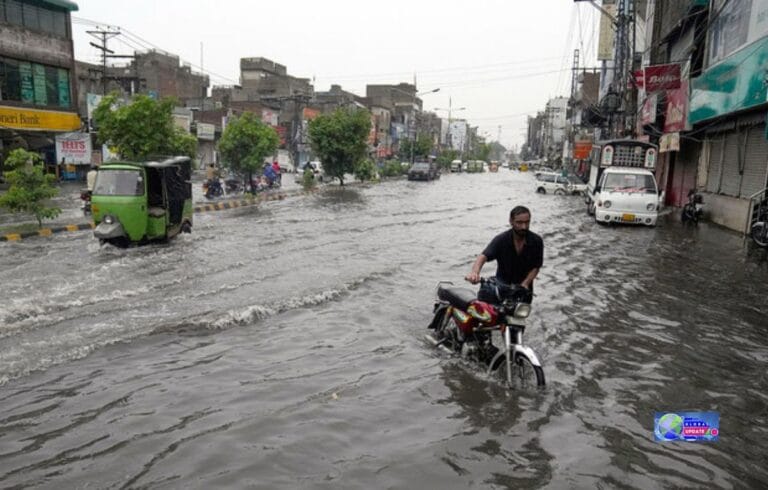LAHORE – A powerful spell of rain and thunderstorms swept through various parts of Punjab over the past 24 hours, leaving behind a trail of devastation.
At least 45people lost their lives and 140 others sustained injuries, according to Farooq Ahmed, spokesperson for the Punjab Rescue Service, who confirmed the tragic toll on Wednesday.
The heavy rains and gusty winds began late Tuesday night and continued through Wednesday morning, causing widespread destruction across Lahore, Faisalabad, Sargodha, Multan, Rawalpindi, and other districts.
According to authorities, the casualties primarily occurred due to collapsed roofs, electrocution, and falling trees.
The terrible cost of nature’s fury.
Most of the people who died lived in low-lying, poorly built urban and rural areas. When bad weather hits, infrastructure that isn’t up to par is very vulnerable.
Tin roofs were blown off of houses, walls caved in, and power poles were uprooted in several places, making things even more chaotic.
“Emergency teams have been working nonstop to free people who are trapped, clear the area of debris, and help people who are hurt,” Farooq Ahmed said, adding that rescue operations are still going on in some areas.
He also said that emergency response units, numbering in the dozens, had been sent out across the province to help people in trouble.
Responses and alerts from the government.
The Provincial Disaster Management Authority (PDMA) and health services are among the departments that the Punjab government has instructed to remain on high alert.
Medical teams have dispatched to hospitals to assist those who have injured.
Chief Minister Maryam Nawaz was very sad about the deaths and told the government to make sure that all the needed help gets to the families who hurt.
She also emphasised the importance of strengthening early warning systems and weather tracking networks, so that people would better prepared for future natural disasters.

Damage to the infrastructure.
In addition to killing people, the storms did a lot of harm to communication lines, transportation networks, and farmland. Several roads closed for a while because of downed trees and power lines, and many areas reported losing power.
Earlier this week, the Pakistan Meteorological Department (PMD) issued warnings about the upcoming rainy season in Punjab and surrounding areas. The new system, on the other hand, was stronger than expected.
Public Safety Measures.
Authorities have urged citizens to stay indoors during storms, avoid contact with electrical wires, and refrain from seeking shelter under trees.
Farooq Ahmed emphasised that people in vulnerable housing should relocate temporarily if possible, especially with further rain expected in the coming days.
In more pain as it rains more.
The relentless rain system expected to last at least until July 17 (today). So the damage is likely to continue on Thursday. Another 16 people killed in Balochistan because of the rain.
People said that structural collapses and electrocution were the main reasons. Most of the deaths happened in Lahore, Okara, Faisalabad, and nearby districts.
Then, one person died in Lahore due to the heavy rains, which reached 170 mm. Three roofs across the city caved in, killing 16 people and seriously hurting another 6.
Conclusion.
As Punjab mourns the lives lost in this devastating weather event, the focus now shifts to rescue, rehabilitation, and rebuilding.
Climate change is making weather patterns increasingly erratic and hazardous. This tragedy serves as a poignant reminder of the urgent need for disaster resilience planning in Pakistan.
The government, emergency services, and citizens must now work together to recover from this crisis and ensure that such a loss of life and property minimised in the future.



